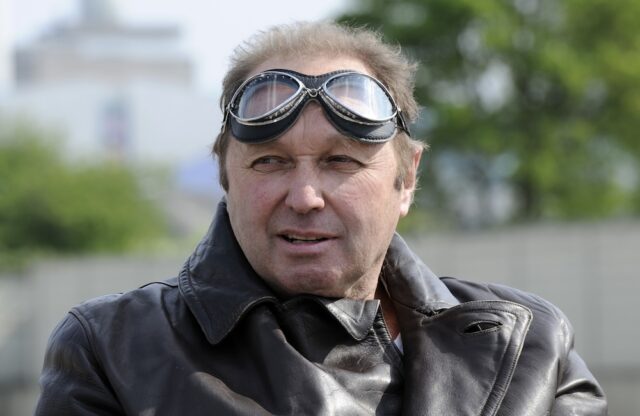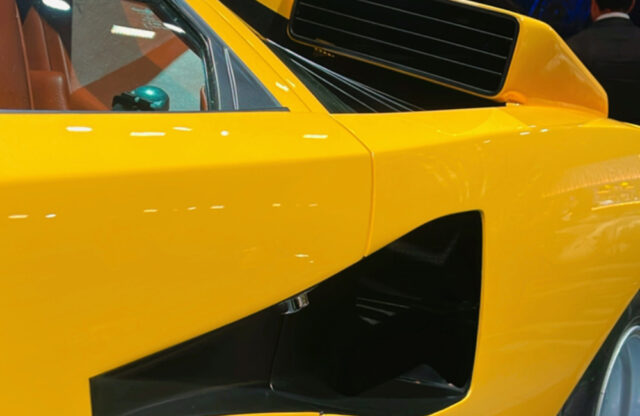WORDS: david lillywhite | PHOTOGRAPHY: Shutterstock
The ongoing battle over the ownership of Bluebird K7, the record-breaking boat in which Donald Campbell lost his life, continues to cast a shadow over this British engineering and sporting icon.
In the first of a series of Briefings, Magneto magazine brought together the key protagonists in the affair – the Ruskin Museum and The Bluebird Project – for a lively and passionate discussion at the Royal Automobile Club, London, in early November. What was laid bare during the session was the distrust and entrenched positions that both parties hold.
Campbell historian Neil Sheppard, who moderated the discussion, outlined his view that only two paths to resolution were possible – that either the Ruskin Museum agrees to The Bluebird Project’s claim on ownership of the restored parts and allows it to maintain and run the boat, or that K7 will be stripped of the parts supplied or created by The Bluebird Project. There are, however, two alternative endings: The Bluebird Project could renounce its claim on ownership and hand the boat over to the Ruskin Museum to put on display, or the battle is taken to the courts for the ownership dispute to be settled in law. The unedited video of the briefing can be seen below.
At the heart of the impasse is a disagreement over the ownership of the restored boat. The wreckage was gifted to the Ruskin Museum by the Campbell Family Trust. Bill Smith, who recovered the boat from Coniston Water, offered to restore the boat at no cost and pass it back to the Ruskin Museum on completion, later (in 2012) forming The Bluebird Project Ltd. Both parties then raised money to support the restoration: the Ruskin to build a permanent home for the boat, and The Bluebird Project to fund the restoration.
The claim from The Bluebird Project is that, because of the work it put in, and the monies raised, it owns the parts fabricated and added to the boat, and as a result has a share in the ownership of the completed K7. The Ruskin Museum contends that monies raised and the work undertaken was done in the knowledge that the completed boat would be handed over to the Ruskin Museum with no claim on ownership.
The Bluebird Project first claimed ownership in the restored elements in 2013, some seven years after the boat was gifted to the Ruskin Museum. Since that point there has been claim and counterclaim, whilst The Bluebird Project continued to restore the boat and successfully ran it on Loch Fad in 2018. The boat has yet to be housed in its purpose-built wing at the Ruskin Museum.
There is no doubt that the work undertaken by Bill Smith and his team was driven by a desire to meticulously recreate the boat that entered the water in 1967. Huge credit should be given to The Bluebird Project for getting Bluebird into a position where it can be run again – it was a significant engineering achievement and one that should be recognised. But it seems to Magneto that the claims on ownership and the demands being placed on the Ruskin Museum go way beyond what was originally intended or initially agreed to, and beyond the power of the Ruskin Museum to deliver.
As we’ve already mentioned, the view of Campbell historian Neil Sheppard is that only two paths to resolution are possible – that either the Ruskin Museum agrees to The Bluebird Project’s claim on ownership of the restored parts and allows it to maintain and run the boat, or that K7 will be stripped of the parts supplied or created by The Bluebird Project. Two alternative endings are that The Bluebird Project could renounce its claim on ownership and hand the boat over to the Ruskin Museum to put on display, or the battle is taken to the courts.
It is very difficult to see a way through this without both parties taking a significant step back and seeing the bigger picture. Bill Smith contended in the Briefing that the Ruskin Museum needs to put something ‘tasty’ on the table to draw him into a negotiation. Our view at Magneto is that all preconditions (including that of ownership from Bill Smith) need to be dropped by both parties ahead of any further attempts to resolve the issue.
There is a way through this, but it requires a level of trust to be rebuilt between the parties that is unlikely to be reached. Without that, then the dispute will see its day in court with the result either a victory for the Ruskin Museum, which will get to keep the entire boat to be put on display for the nation, or a win for The Bluebird Project, at which point the boat will be dismantled to be rebuilt and run again.
For the Briefing, the Ruskin Museum was represented by vice-chair Jeff Carroll, The Bluebird Project by Bill Smith and the Campbell family by Don Wales (nephew and godson of Donald Campbell), and the event was moderated by Neil Sheppard with Healy’s lawyer Clive Robertson also part of the discussions. Bill Smith joined from his North Shields base via Zoom.
If you liked this, then why not subscribe to Magneto magazine today?





